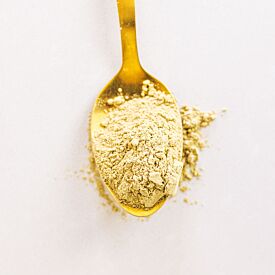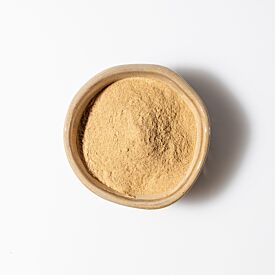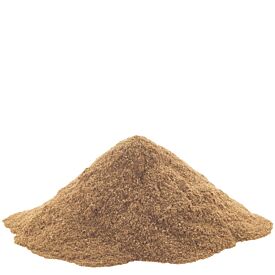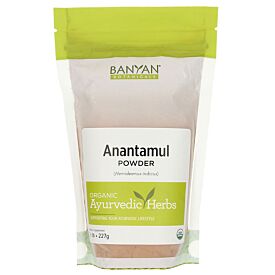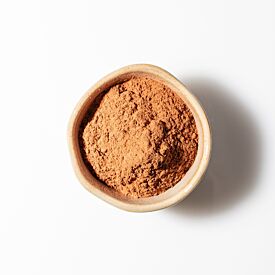Liver Rejuvenation for Balanced Health
The age we live in is unparalleled. We have access to the deepest wisdom from ancient times and modern science. Our understanding and the depth of our approach to health can be more profound and more effective than ever before. For this to be the case, though, we must overcome the assumptions that go into our approach to understanding. Even something as concrete as the liver has many implications when we look at the ancient tradition and the classical writings of Ayurveda.
The liver is the main organ of transformation and metabolism. This is known in allopathic medicine. It plays a role in carbohydrate metabolism, bile production (used to carry and break down fats in the small intestine during digestion), and hence fat metabolism. It stores and releases glucose, vital to our ability to go many hours without eating. It processes the breakdown of hemoglobin. It detoxes, converting harmful ammonia to urea that gets excreted in the urine. It detoxifies free radicals. It resists infections by producing immune factors and removing bacteria from the bloodstream. It produces blood clotting factors and other blood plasma proteins. It regulates the blood levels of amino acids. It is the main processing house for drugs, poisonous substances, and herbs.
What the Ancients Knew
The seat of many pitta-related processes, the liver is much more in Ayurvedic terms. What the ancients knew is that the liver, like any organ, is more than just a collection of cells. They used the term ranjaka to describe the functions of the liver and gallbladder. And they knew that this was more than a physical organ—that it had its own energy, its own qualities, and was intertwined with the processing and functioning of the mind (the pitta of the mind).
The expanse of this view cannot be underestimated. It is a recognition of how the nonmaterial field of energy and intelligence that underlies all of creation interacts with the physical vehicle for the soul. Thus, mind-body interactions were understood and taken for granted. The liver was much more than an organ. It was seen as a living organism with its own energy and vibration.
Ranjaka Pitta and the Bhuta Agnis
Ranjaka pitta incorporates more than the liver. It includes the gallbladder and all of its functions and energies as well. While the gallbladder is thought to be that which stores the bile, again, the ancients knew it to be much more. They understood the expression “that which galls us.” They saw the relationship of ranjaka to pitta emotions like anger, frustration, and jealousy.
To isolate the liver and refer to the organ itself is fraught with problems of distortion. The sages knew it was more than that. So, in discussing “liver balance,” I will use the term ranjaka frequently, as it conveys the energy, functions, and more holistic view of the ancients.
The sages also knew that the liver was the seat of five of the thirteen primary agnis (or fires of metabolism). A fire exists to convert each of the seven dhatus (tissues) from one to the other. The initial conversion of food in the stomach is due to jathara agni. What are the remaining five agnis? These are the bhuta agnis. The bhuta agnis relate to the five maha bhutas. Each primary element (space, air, fire, water, and earth) requires an agni to process it. When something watery needs to be metabolized and processed, for example, it is the agni related to the water element that undertakes that job. The bhuta agnis are located in the liver. This is why the liver is so important.
Common Liver Imbalance in the West
The Western physiology often shows ranjaka imbalance, as the liver is the main organ for detoxifying drugs, chemicals, pesticides, artificial ingredients, and toxins like alcohol. It is the most common imbalance found in the pulses of my clients and those of my students. The imbalance is further aggravated by the inordinate levels of frustration and discontent that are prevalent in the West.
This fact requires us to think in holistic, nonmaterial terms—there is no herb for an ego that is in resistance to the way life is unfolding. For this reason, the approach in the West needs to be much different than that in the East. Too often in the West, when we go to purify the liver, the results are mixed or, at worst, disastrous. Due to the measure of toxins of many people in the West, standard panchakarma protocols can result in severe rashes as the toxins are pushed out to the skin. Sometimes these are so severe that they require modern medicine to intervene. For that reason, we have to be careful to utilize detoxification protocols that respect the toxicity most clients and patients are carrying. In this regard, a famous vaidya has taken to using transdermal application of herbal substances just to bypass the liver and its extreme toxicity in the West.
When looking at ranjaka imbalance in the West, we must be careful not to fall prey to the assumption that finding indicators of ranjaka in the pulse diagnosis or tongue diagnosis means we must cool and “purge” pitta. This is the most common error I see in beginning students.
Assessment of Ranjaka Pitta
In order to avoid this assumption, we have to remember that any one of the five bhuta agnis may be malfunctioning, giving rise to all sorts of combinations of problems in addition to ama. Keep in mind that the ama may be intrinsic (the result of weak digestion) or extrinsic (toxins that we were never designed to metabolize).
When Vata Pushes Pitta
Although ranjaka is a sub-dosha of pitta, realize that it can be driven out of balance by any of the doshas. The most common variant is vata leading pitta. Think of this like a fire that is just barely smoldering until you get a bellows and fan it into a roaring flame. The power of vata to make pitta rage is often underestimated. I had this experience living in Santa Barbara during a forest fire and for three days watched it smoldering on the mountainside. On the fourth day, the winds came over the mountain and half of the city had to be evacuated within hours, as the fire raged down the mountain and into the city within minutes of the winds picking up. That taught me the power of vata to fan pitta and make it rage.
When Vata Dries and Depletes
Another way in which vata can be involved in ranjaka imbalance is high vata depleting the substrate and grounding for pitta. Vata dries it out and depletes it. Think of this like having only very dry, light kindling for making a fire. The fire burns hot and fast and then goes out. There is fundamental weakness, yet it appears as if pitta is far too hot. The problem is when we use bitter, cooling substances with a catabolic effect, we end up with depleting substance, or the earth element in the liver, and it becomes even more like burning dried-out kindling. We need to be cooling and building in this case, not depleting further. This is one of the reasons that bitter herbs sometimes fail in treating acne. It all depends on the state of imbalance and the state of ranjaka.
Subtle and Energetic Influences
With the two main problems in the West being toxicity and frustration, we also need to keep in mind that our assessment must include all of the koshas. It does no good to recommend an herb if the imbalance in ranjaka is being driven by the ego’s constant resistance and frustration. It simply won’t work. Thus, we must assess the spiritual, causal, mental, emotional, and energetic levels in addition to the physical level of life. Again, we may miss important opportunities for intervention if the individual has a strong influence in the causal plane that we are not taking into account. This level of life can often be best assessed via the jyotish chart. For example, if a person has Mars in the first house of Self (and body as a whole) and if Saturn is transiting that house, the constrictive nature of Saturn may create frustration and inner conflict. If we overlook this, then we miss the opportunity to utilize jyotish remedies to get to the root of the problem.
Common Patterns of Liver Imbalance
The most common pattern of imbalance in ranjaka is excess fire element. This usually comes from blocking the spreading of the heat of the liver. Pitta then accumulates in the liver and typically heats up the blood. The liver requires flow and this is aided by the pressure of the diaphragm that takes place with deep breathing. When we breathe deeply, we massage and encourage the natural flow of blood through the liver.
It accumulates and heats the blood and creates inflammation. This creates all sorts of problems from acne to allergies. Certainly, there are other causes of this excess pitta besides lack of flow. As mentioned before, it is frequently caused by emotional frustration—the blocking of the natural flow of desire to its target or goal. Emotional factors play a huge role in ranjaka and pitta imbalances in general. The understanding that what “galls” you, creates heat in the gallbladder and liver. Certainly, dietary factors also play a role, but none so great as the toxin that is commonly accepted as a normal part of our culture—alcohol. Nothing heats up the liver as much as alcohol and that is the case even with “just” a glass of wine in the evening. (A professor of mine used to say that nothing creates free radicals as much as alcohol, with the exception of chemotherapy agents.)
The second most common pattern is vata fanning pitta. In our fast-changing society with irregular schedules, frequent moves, flying cross country and poor sleeping habits, vata often gets out of balance and then leads pitta out of balance. Ranjaka pitta is particularly prone to this. When the wind fans the fire, we see intense heat signs and symptoms, but if we simply address the heat without addressing the wind, we will fail to contain the fire. This is common in hot flashes that don’t respond to pitta-pacifying measures. We have neglected to manage both vata and pitta simultaneously.
The third pattern can result from a longstanding period of vata fanning pitta or can come from malnourishment itself. It is often seen in those who have tried to make the shift to a vegan diet or a raw foods diet without doing it gradually over time. We find in this case ranjaka with a lot of dryness. Vata has dried out the essence or grounding element (the earth element) in the liver. This can also happen in longstanding alcohol use, as alcohol is both heating and drying. In the worst case, the liver dries up, hardens, and scar tissue remains (cirrhotic liver). We also see this dryness and a hot liver in smokers, although not to the same extreme as in alcoholism.
Recommendations for Balancing Ranjaka
Here we must remember the koshas and work in a holistic manner. From the spiritual level of life (ananda maya kosha), remember that the solution to the ego’s resistance and frustration with life, is to come to the peace, love, and acceptance that we find when we transcend our egos and go into our greater selves.
Never underestimate its importance in balancing ranjaka.
On the level of the gyana maya kosha, the karmas and innate tendencies can be driving pitta to be out of balance. The blueprint for reading this is the Jyotish chart. The beauty of Jyotish is that there are remedies that can counter the karmas and tendencies. These include yagyas and gemstones.
On the level of the mano maya kosha, aromas can have a profound impact, as smells are often associated with emotion in the wiring of the brain and in the subconscious mind. Curiously, Roman chamomile and peppermint, as well as fennel, can have a soothing effect on the mind. Here also, Ayurvedic counseling can play a role—looking at the aspect of desire and how we relate to it being blocked.
On the level of the prana maya kosha, yoga is important in intervening, particularly emphasizing postures that involve twists and deep breathing.
On the level of the anna maya kosha, dietary interventions can play a significant role, as well as herbs. One favorite that both cools ranjaka and purifies the body is cilantro chutney, made most simply by taking 2 cups of fresh cilantro and 1 peeled and cored pear and blending in a food processor. Taking a couple of tablespoons with a meal can cool and purify. Another favorite is pomegranate juice.
Herbal and Dietary Support
Ultimately, though, we must organize our dietary and herbal strategies along the lines of the imbalance. Banyan offers Liver Formula, a well-rounded herbal tablet for liver detoxification and rejuvenation. When creating a bulk herb formula, if we take very bitter herbs like manjistha and anantamul (Indian sarsaparilla) when the imbalance is vata fanning pitta or ranjaka depletion, then we may simply aggravate the problem. These herbs, including neem, are very useful in straight pitta excess or when pitta ama is present. They are not so good in other imbalances.
When vata is involved or depletion is present, think both nourishing and cooling. Herbs like amalaki, licorice, marshmallow, and shatavari can be very useful in these conditions.
Summary
Always treat the imbalance and not the symptoms. Understand that working from the level of symptoms does not tell you what is the underlying imbalance. With ranjaka imbalance, we find heat symptoms, but this does not tell us if it is primary pitta imbalance or vata fanning pitta or vata drying out the liver. Go for the deeper diagnosis and clinical success comes easily.



